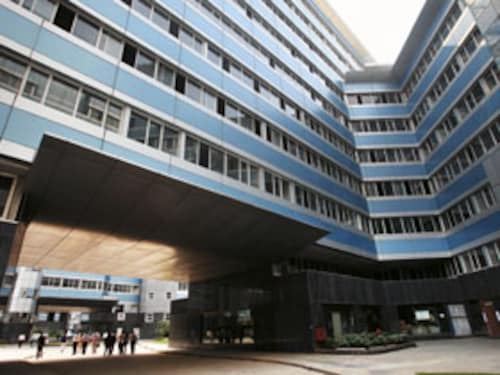Power Shift - The New Mumbai Diamond Bourse
A new diamond bourse in Mumbai wants to change the face of the global diamond trade


Diamond trading is big in India. Out of every 10 stones cut and polished in the world, eight are processed in India. More than 600,000 workers are engaged in this trade in India. Yet, the two diamond bourses where most of the $28 billion business is transacted are located in Tel Aviv, Israel and Antwerp, Holland.
For diamond traders operating out of Mumbai it was imperative that India’s commercial capital too have a bourse that could challenge the ones at Tel Aviv and Antwerp. That’s when the idea of setting up Bharat Diamond Bourse (BDB) took shape. But that was easier said than done. It took 19 years and more than Rs. 1,000 crore for the Bharat Diamond Bourse to finally launch in October 2010.
The promoters of the bourse believe that it will change the face of diamond trading. “We see the diamond business moving to the East,” says Anoop Mehta, president, BDB. “The only likely competitor could be Hong Kong, because of the China factor, but we will always be bigger than Hong Kong,” he adds.
Lofty ambitions, yes. But BDB has some way to go before challenging Tel Aviv and Antwerp. First it needs to hit upon a strategy on getting the better of a domestic rival: Surat. Much of the trading of diamonds in India is not done in Mumbai, but in Surat, Gujarat.
And the little that is transacted in Mumbai gets done from three buildings in Mumbai — Prasad Chambers, Pancharatna Building and Shreeji Building. It is quite possible that the Mumbai business will move to the BDB, but that will not be case with the Surat-based trading. The reason why the diamond trade is conducted out of Mumbai is because Municipal Corporation of Greater Mumbai (MCGM) charges a 2 per cent Octroi on cut and polished diamonds. Surat does not.
To understand why the 2 percent octroi can make or break the trade, one needs to realise that much of India’s diamond cutting and polishing industry specialises in low value, high volume diamonds. India accounts for just 60 percent of the value of diamonds. The pipeline for cutting and polishing these stones takes at least three months, if not more.
Most diamond imports are financed with one currency. The cutting and polishing pipeline in India is financed in rupees and then sold in global markets, usually in US dollars. The diamantaire has to hedge himself against three currencies, for a period of at least three months or more. Add labour, and the related costs of moving these stones around from one place to another. The result is a wafer thin margin of single digit numbers. Two percent octroi can be a big blow.
Most of the labour for this business is located in Surat. Once diamonds are imported they are taken to Surat and a close-knit network of cutters and polishers take over from the trader. Once they are done, the diamantaire then takes them to the bourses overseas for foreign customers. The BDB is unlikely to replace all this, given the existing networks and the burden of taxes.
“Surat will continue to remain the most important diamond center for trading,” says Shashikant Shah, a diamond industry consultant.
“We think that till the octroi issue is settled, the BDB will not take off,” echoes Sanjay Kothari of Kunal Diamonds. Kothari’s firm is a member of the BDB but, like many other members, has yet to shift to the bourse.
“We have already taken up this matter with the state and municipal authorities,” says Mehta. He is keeping his fingers crossed.
First Published: Nov 29, 2010, 06:39
Subscribe Now(This story appears in the Mar 31, 2023 issue of Forbes India. To visit our Archives, Click here.)